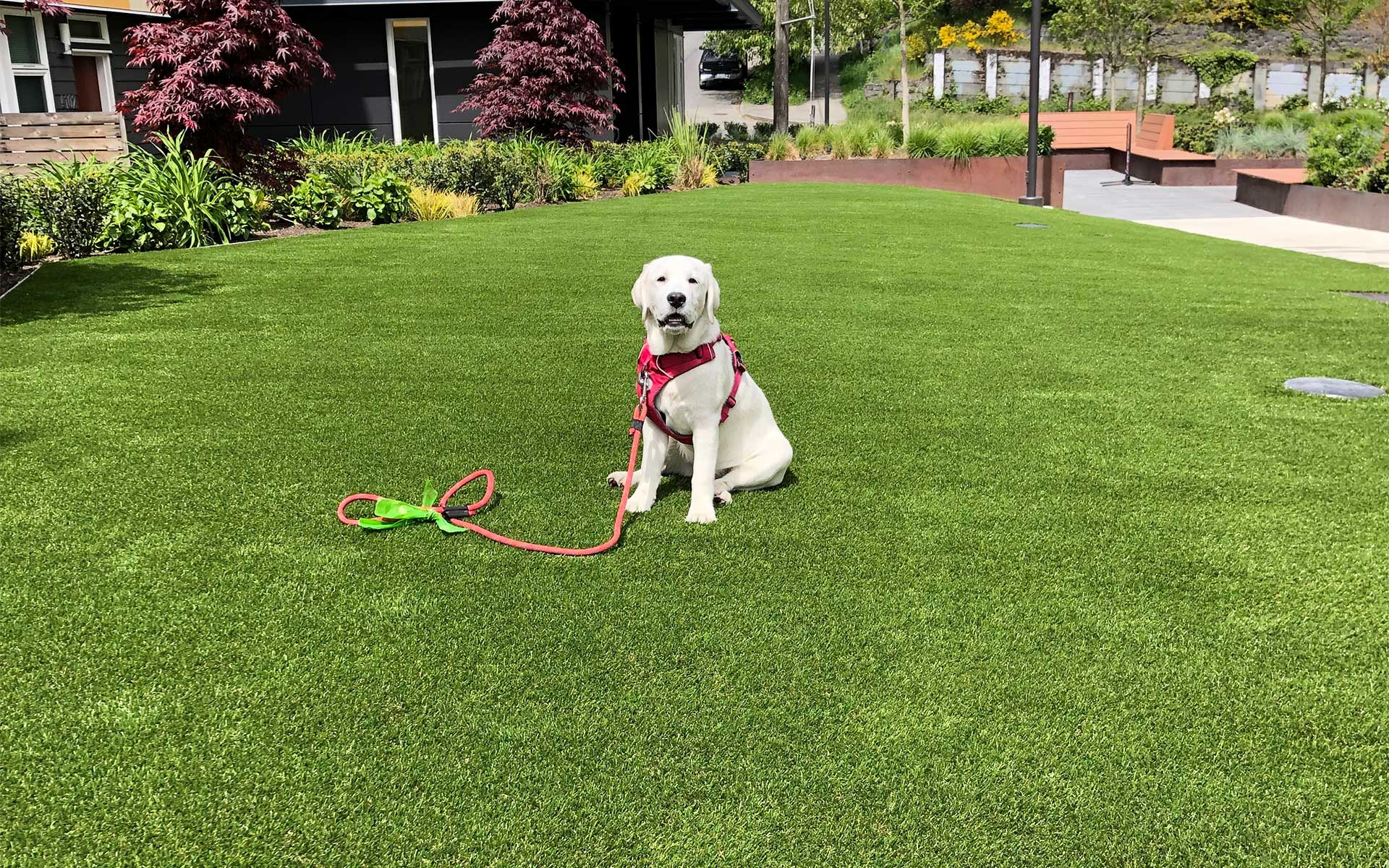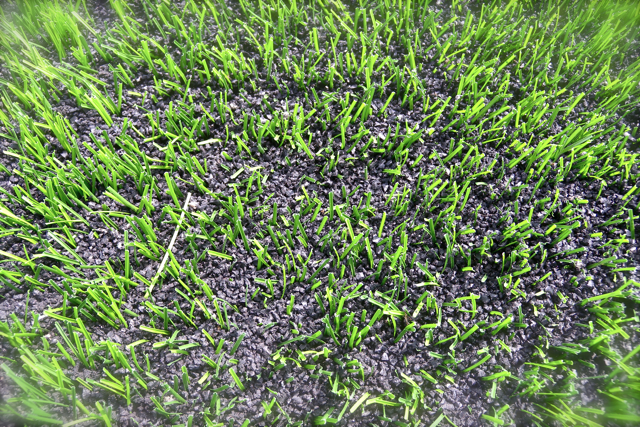Enjoy a Flawless Lawn with Arizona Artificial Turf for Any Outdoor Space
Enjoy a Flawless Lawn with Arizona Artificial Turf for Any Outdoor Space
Blog Article
See Why Homeowners Prefer Artificial Grass for Lasting Landscape Design Practices
As homeowners progressively prioritize sustainability in landscaping, synthetic grass has actually become a compelling option to standard lawn. Its capability to save water, lower upkeep efforts, and lessen ecological effect settings it as a functional option for those seeking environment-friendly remedies. In addition, the visual allure and adaptability of man-made lawn deal with varied style preferences. Nonetheless, the effects of this change prolong beyond mere ease and visual appeals, prompting a more detailed exam of exactly how these choices influence broader ecological results. What remains to be discovered is the full extent of benefits that synthetic grass can supply to house owners and the environment alike.
Water Conservation Conveniences
One of the most substantial benefits of fabricated lawn is its function in water preservation. In contrast, synthetic lawn eliminates this need totally, as it does not call for watering.
Additionally, the setup of synthetic grass can add to a much more sustainable landscape. Homeowners can significantly decrease their water costs, enabling reallocation of resources to other ecological efforts or home uses. In addition, synthetic grass is created to stand up to various weather problems without the need for supplemental watering, making it an excellent choice for areas dealing with water scarcity.
The ecological benefits expand beyond immediate water financial savings. By minimizing water consumption, fabricated grass helps to alleviate the impacts of environment modification, maintaining vital ecological communities that are threatened by excessive water extraction. As sustainable landscape design methods obtain traction, artificial grass emerges as a liable choice for home owners seeking to produce environmentally friendly exterior areas.
Decreased Upkeep Initiatives
Synthetic lawn considerably lowers maintenance initiatives compared to standard yard lawns. With synthetic lawn, homeowners can eliminate the lengthy tasks related to all-natural landscaping, such as mowing, feeding, and weeding. This not just saves valuable time but likewise lowers physical labor, making lawn care easily accessible for people of all ages.
Typical grass need regular trimming to keep an aesthetically pleasing elevation, whereas fabricated grass stays consistently lavish without the demand for cutting. Furthermore, house owners no longer require to apply fertilizers or chemicals, which are typically needed to keep all-natural grass healthy and balanced.
Moreover, synthetic grass is resistant and long lasting, needing very little upkeep beyond occasional cleaning and rinsing to get rid of debris. This convenience of maintenance allows home owners to enjoy their exterior spaces without the consistent worry of maintenance, providing more time for recreation and family activities. Inevitably, the decreased upkeep efforts connected with synthetic grass make it an attractive alternative for those seeking a low-maintenance, aesthetically appealing landscape.

Ecological Impact Reduction
There is an expanding recognition of the ecological advantages connected with fabricated grass, specifically in terms of water preservation and reduced chemical use. Traditional grass need substantial amounts of water, particularly in drought-prone areas, causing increased stress on regional water sources. On the other hand, fabricated turf gets rid of the demand for watering, dramatically lowering water Check Out Your URL usage and advertising sustainability.
Additionally, traditional yard upkeep often includes the application of pesticides, herbicides, and fertilizers, which can read the article add to soil and water pollution. Synthetic grass minimizes this ecological hazard by needing marginal maintenance and basically eliminating the need for hazardous chemicals. This not only enhances soil health and wellness however likewise secures regional ecological communities from toxic drainage.
In addition, the manufacturing of natural grass yards typically entails using fossil gas for cutting and landscaping devices, further adding to greenhouse gas exhausts. By picking man-made grass, property owners can considerably lower their carbon footprint related to lawn treatment activities.
Aesthetic Allure and Convenience
In enhancement to its ecological advantages, synthetic grass provides substantial visual appeal and versatility for landscaping. Home owners can achieve a rich, environment-friendly look year-round, eliminating the seasonal changes frequently related to natural lawn. This regular visual not just enhances the visual appeal of a building yet also contributes to a properly maintained and sleek appearance.
Moreover, synthetic grass is available in a range of designs, shades, and appearances, enabling modification to fit specific choices and layout styles - Arizona turf. Whether made use of in property gardens, commercial spaces, or entertainment locations, it can flawlessly incorporate into diverse landscape design styles, from modern minimal to rich tropical settings
The versatility of synthetic grass prolongs beyond plain appearance; it can be installed in numerous areas, consisting of rooftops, patios, and also indoor rooms, producing chances for unique landscape design options. Additionally, it appropriates for a series of activities, from youngsters's play locations to pet-friendly environments, giving performance without endangering design.
Eventually, the aesthetic allure and adaptability of artificial lawn make it Visit Website an attractive alternative for property owners looking for lasting landscaping options that do not sacrifice appeal for ecological responsibility.

Long-Term Cost Financial Savings
One of the most engaging benefits of man-made lawn is its capacity for lasting price financial savings. Unlike all-natural lawn, which calls for regular maintenance-- consisting of mowing, watering, fertilizing, and insect control-- man-made lawn significantly lowers these ongoing expenses.
Furthermore, synthetic grass has a life-span of 15 to 25 years, relying on its top quality and use. This resilience reduces replacement costs, making it a more economical choice in the long run. Furthermore, the initial investment in synthetic grass can often be recouped with the financial savings accumulated gradually.
While the ahead of time expense may appear greater compared to sod installment, the advancing savings from reduced upkeep and water use typically exceed these preliminary expenditures. Eventually, the adoption of synthetic grass not only advertises a sustainable landscape design remedy but additionally provides property owners a financially wise alternative that lines up with long-term budgeting objectives.
Final Thought
Synthetic grass becomes an engaging choice for lasting landscaping, supplying considerable benefits in water preservation, decreased upkeep efforts, and lessened environmental influence. Its aesthetic charm and versatility improve the aesthetic landscape while aligning with modern sustainability objectives. Long-lasting price savings contribute to its attractiveness for house owners. As areas increasingly prioritize eco-friendly practices, the adoption of synthetic grass stands for a modern action towards accomplishing resistant and sustainable landscapes.
Additionally, artificial turf is designed to hold up against numerous weather problems without the demand for supplementary watering, making it an ideal selection for areas dealing with water shortage. (Artificial turf companies phoenix)

Artificial lawn emerges as an engaging choice for sustainable landscape design, using considerable advantages in water preservation, reduced upkeep efforts, and lessened environmental influence.
Report this page